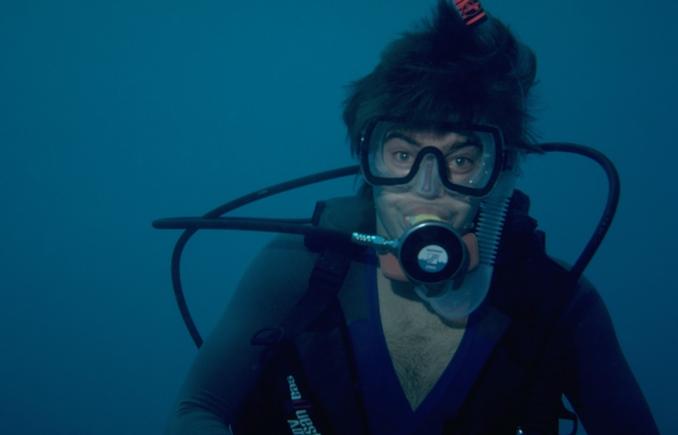Part 1 of 3
 Can you still recall what your first glimpse of the underwater world was like? Perhaps you saw a fish, maybe two or more. Perhaps you saw the bottom, a couple of things growing here and there. Was that not an overwhelming feeling?
Can you still recall what your first glimpse of the underwater world was like? Perhaps you saw a fish, maybe two or more. Perhaps you saw the bottom, a couple of things growing here and there. Was that not an overwhelming feeling?
You were wearing your first mask, possibly a snorkel, and if you were fortunate, your first set of fins. You were granted access to a completely different world.
Out of the rocks you see something. You approach it only to see it bolt fast and go deeper. How fast is your heart beating with emotion. How overwhelmed with the sightings your mind is. How great that experience was! How did that leave you craving for more. Only this time you no longer want to see it from just the surface. You want a closer look, up front, first row. You are ready to take the next step and you signed up for your scuba diving certification classes.
Congratulations!
So, what do you need to ensure that not only you pass all the requirements but are safe and enjoy the activity to the fullest? The coming paragraphs, and subsequent installments, will provide you with useful information intended to help maximize your enjoyment of diving.
How is Your Health?
When was the last time you had a full medical check-up? If you haven’t had one in the past 6 months, please see your physician and get a thorough examination. Certain conditions, such as asthma, epilepsy, history of spine injury, history of vertigo, medications for certain conditions, among many more, will require clearance from your doctor. All scuba diving agencies will have you fill out a questionnaire which includes a brief section on medical history. It is important that you are honest. Many unpleasant, very often fatal, situations have been encountered during instruction even in the safe confinements of a swimming pool just because the participant chose to hide important medical information.
What Do I Need?
 Scuba diving is a gear-laden activity and there are some basics you will need. Wetsuit, booties, fins, gloves, and hood for thermal protection is a great start to keep you comfortable.
Scuba diving is a gear-laden activity and there are some basics you will need. Wetsuit, booties, fins, gloves, and hood for thermal protection is a great start to keep you comfortable.
Even in warm water your body still looses heat rapidly, about 25 times faster than in air. The more your body fights to keep you warm, the more gas you will consume, the shorter your bottom time will be.
A mask, snorkel, and fins will complete your basic attire. The rest can easily be rented at most diving destinations.
Eventually as your skills grow and you feel the need to explore more, you will need your own diving instruments, buoyancy compensator, and any other piece of gear that is needed for your chosen underwater activity.
There is one thing though that is a must have for every novice scuba diver and cannot be found in any scuba shop. It is Confidence in The Water.
Do I need to be a superb swimmer?
While it never hurts to be one, being comfortable with the free-style will be sufficient for most beginners. If you are considering in going beyond the basics, I recommend getting acquainted and comfortable with the backstroke and the side stroke. As stated above, you HAVE to be confident in the water and your swimming skills.
All agencies require candidates to complete a swimming bout which ranges from 200 to 250 yards. You also have to be able to tread in the water without holding to the edges or ladder for about 15 minutes. Some will have you perform tasks while treading such as holding a weight or pass it from one candidate to the other.
You will also need to complete a swimming bout wearing only mask, snorkel, and fins, and using only your lower body to move you around. Depending on the certifying agency, you will find slight variations on the requirements. If you need to stand in the shallow end of the pool, or hold on to the ledge to rest after a couple of laps, you need to improve your swimming skills, your diver fitness, or both. Dive Instructors are good at spotting this and will not pass you unless you demonstrate good basic swimming skills. Do not take it personally. Whether you like it or not, your life depends on how well you deal with the aquatic environment.
After the instructors are satisfied with your swimming skills, they will move on to more advanced underwater drills such as removing your mask, putting it back on and clearing it; removal and retrieval of your air supply regulator, removal and replacement of your air tank, etc. If you are not comfortable above the surface, how can you expect to do well under it?
